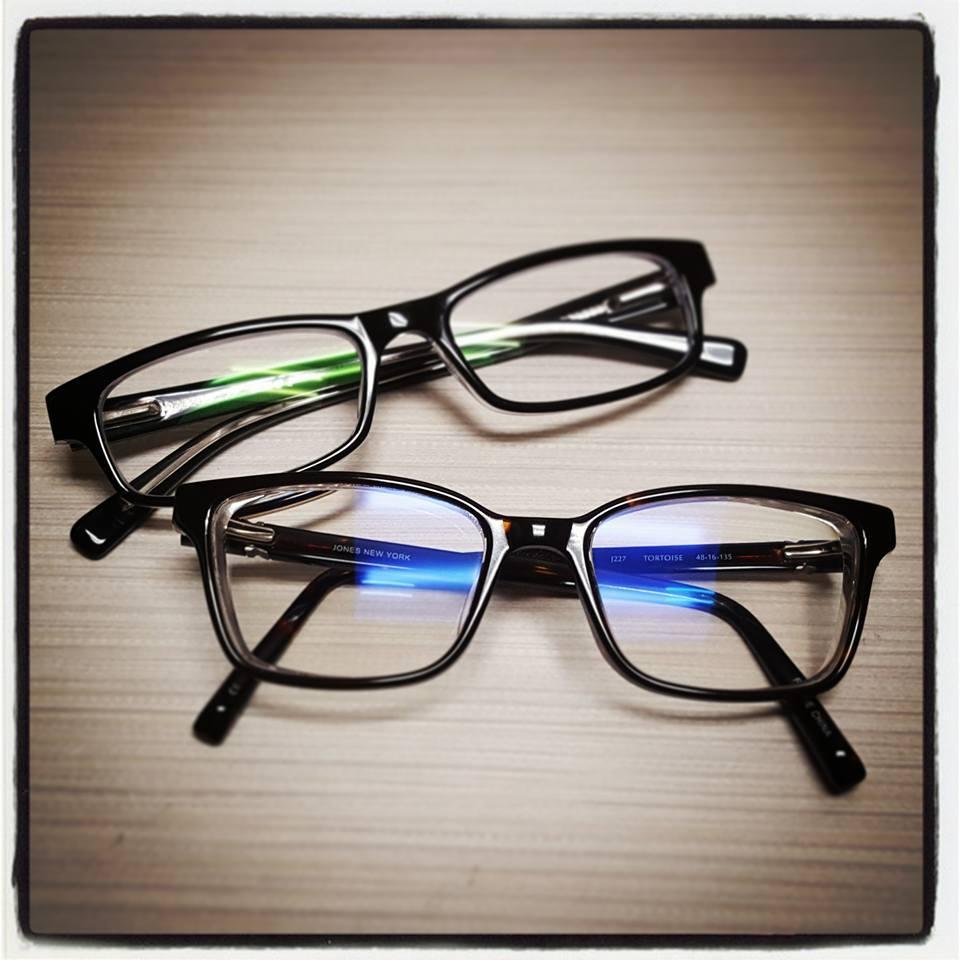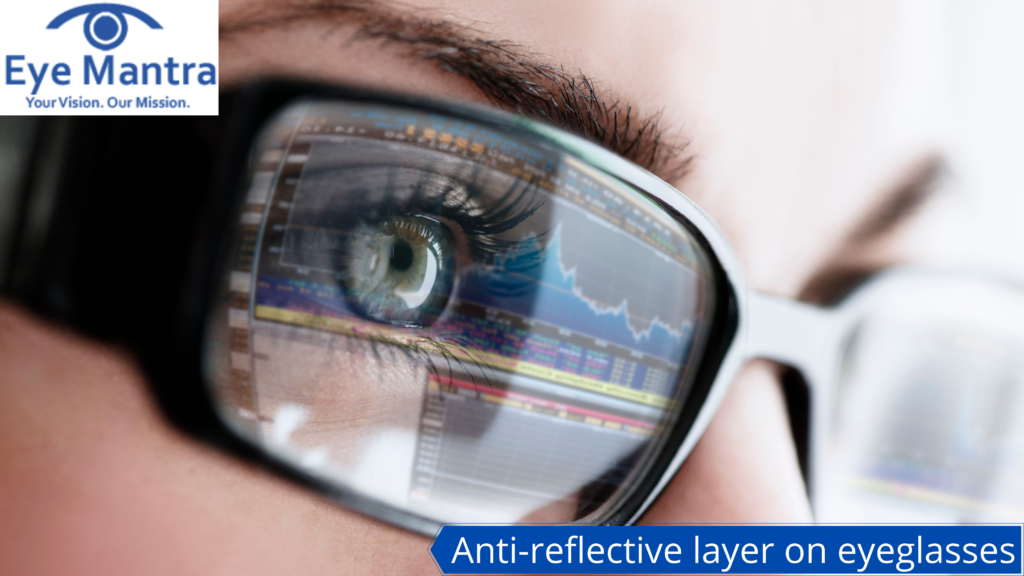Contents
What Is An Anti-Reflective Layer?
The anti-reflective layer is the protective coating that is applied to the eyeglasses to reduce the glare and reflectivity. This protective coating helps in making stronger prescriptions more attractive. The eyeglasses which are made from high index plastics usually have reflective surfaces which may obstruct effective communication by the distraction caused due to reflection in the lenses. To prevent such scenarios an anti-reflective layer is applied on such glasses so that the speaker in front of you doesn’t notice their reflection on your eyeglasses.
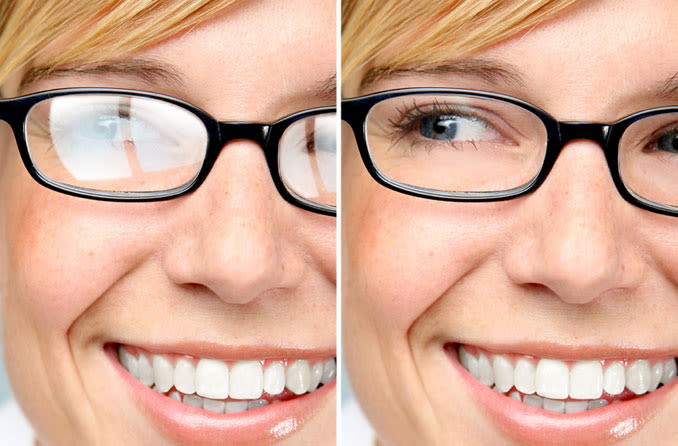
Use of Anti-Reflective Layer
The anti-reflective layer in the eyeglasses improves vision and reduces eye strain. The anti-reflective layer has the ability to virtually eliminate the reflections from the front and back of the surfaces of the lenses. Due to the absence of reflection more light is able to pass through the lens which optimizes the visual acuity with fewer distractions and it also makes the lens look invisible. This protective layer draws more attention towards your eyes and helps you to make better eye contact while being in a conversation with others. The modern anti-reflective layer present on the eyeglasses allows the entry of almost 99% of light without causing any reflection which in turn improves the quality of vision.
The Protection Provided By The Anti-Reflective Layer
the anti-reflective layer does not prevent UV rays from entering the lenses. This protective layer provides glare resistance and can be combined with other protective layers to help enhance vision. They come in a wide range of variety and one can choose from the most expensive to inexpensive anti-reflective layer. Some of the anti-reflective coatings increase the durability of the lenses and make them scratch-resistant.
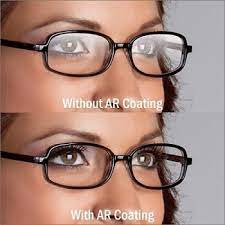
Misconceptions
There are misconceptions associated with the anti-reflective layer. One of the misconceptions is that they provide protection against UV light. It is not true as the glasses which provide protection against the UV light have a layer applied on top of the lens along with a layer of anti-reflective. Such a combination of layers can be seen in sunglasses. The anti-reflective layer does not protect from UV rays but only minimizes the light being reflected from the lenses.
The other misconception is that having an anti-reflective layer installed in your eyeglasses is necessary as it improves the vision. It is important to know that the installation of an anti-reflective layer is not at all necessary. It only prevents the formation of the reflection on the lenses and does not improve the vision but improves the visual quality. Also, It is believed that the anti-reflective layer provides protection against the blue light emitted by laptop screens and phones.
Overworking in front of the screen can cause excessive strain on the eyes which can be prevented by the use of computer glasses that have a protective layer that blocks the rays radiated by blue light. the anti-reflective layer does not give protection from blue light radiated from the screens.
How Anti-Reflective Coating Is Applied?
Anti Reflective coating when applied over the lens of the eyeglass, it requires a technical process that involves vacuum deposition technology.
- First, the surface of the lens is cleaned and is inspected for small microscopic defects. Even small defects and the presence of any microscopic scratch during the coating process can result in a defective anti-reflective coating.
- After washing, rinsing, and ultrasonic cleaning it removes any traces of contaminants which is followed by air-drying and heating of the lens in special ovens to remove unwanted moisture and gases from the surface of the lens.
- Then the lenses are held tightly using special metal racks with spring-loaded openings. These racks are then loaded into the coating chamber. A vacuum-like environment is created in the chamber and the air is pumped out of the chamber.
- In the coating chamber, a power source within the machine focuses a beam of electrons onto a small crucible that contains a series of metal oxides in separate compartments.
- The coating materials are bombarded with electrons and they vaporize within the coating chamber and stick to the surface of the lens. This creates a uniform, microscopically thin optical layer on the lens of the eyeglasses.
- In some eyeglasses, the lens has an anti-reflective layer and then they are customized according to the vision of the user. Other lenses are first customized as per the eyesight of the user and then the protective layer is applied over the lens of the eyeglasses.
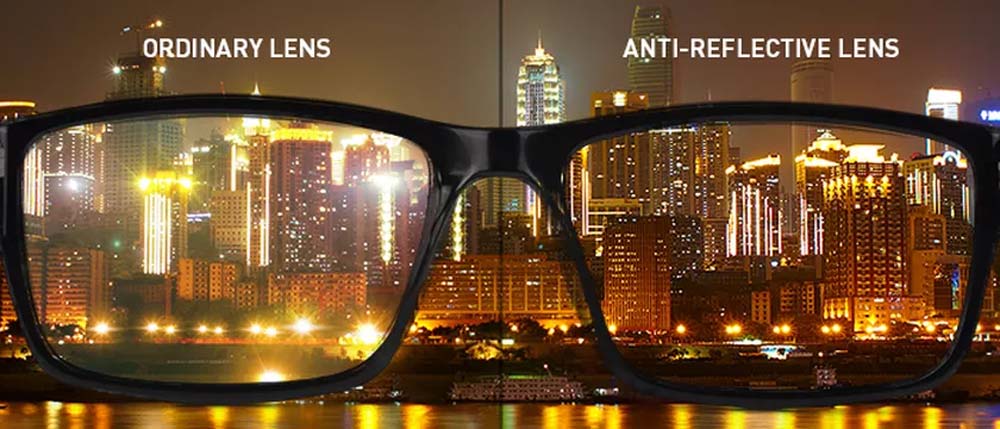
Working of The Anti-Reflective Layer
The anti-reflective layer works by eliminating the reflection of the light falling on the surface of the lens of your eyeglass. Blocking the light from being reflected makes the eyes see clearly and it also reduces the need to squint eyes while working on the screen.
At the night many people tend to have a halo effect around the headlight of the coming cars. Such people can get an anti-reflective layer for their eyeglasses and can help in driving at night. The distraction caused by the halo effect during the night makes it difficult to drive so an anti-reflective layer can be used to eliminate such effect.
The anti-reflective coating can make the lens more susceptible to scratches and oily fingerprints can also become visible. Some anti-reflective coatings come with the added hydrophobic and oleophobic surface which prevents oily fingerprints and water spots from lingering on the lens.
Special types of cloth pieces can be used in the cleaning of the anti-reflective layered lenses. Anti Glare glasses can also reduce the strain caused to the eyes due to long working hours in front of the screen. It is necessary to provide protection to your eyes and adjust the screen in a position for your eyes that it doesn’t cause any strain.

Checking Presence of Layer
You can check whether your glasses have an anti-reflective layer or not just by tilting them and looking for glare. If your eyeglasses have a protective layer then you will notice a pinkish or greenish tint on the lenses. If your glasses do not have an appearance of such tint when you tilt your frame then it indicates that the lenses do not have an anti-reflective layer.
Number of Anti-Reflective Layers
Each anti-reflective layer applied has its own proprietary formula but generally, all the anti-reflective coatings have multiple microscopic layers of metallic oxides of either high or low index of refraction. There are different numbers of layers applied for anti-reflective glasses. Each layer blocks different wavelengths of light. In a lens maximum of seven layers can be applied and they have the highest quality of the anti-reflective layer.
Customized Layering
For different users, different types of the anti-reflective layer should be used and are generally prescribed by the doctor. People who tend to spend more time in front of the screens of laptops need to have an anti-reflective layer along with a layer that filters the blue light.
The people who usually drive at night need to have a layer that can prevent the formation of halos. The colour or the tint imparted by the coating of the anti-reflective layer depends upon the coating formula as it is the characteristic of that particular brand of coating. These coatings are also very thin which does not increase the weight of the lens.
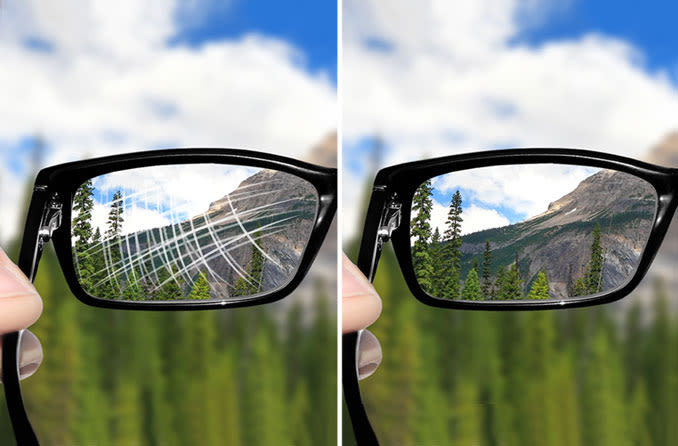
Cleaning Eyeglasses With Anti-Reflective Layer
You need to clean your eyeglasses on a regular basis as it will prolong the life of the eyeglasses. For cleaning the eyeglasses you would require lukewarm water, mild soap, or an eyeglass cleaning solution provided by an optometrist and a clean microfibre cloth.
- Clean your hands and then rinse your lenses under lukewarm water.
- Put some amount of eyeglass cleaner solution or mild soap and using your fingers gently massage it on the lens.
- Then take some amount of soap and clean the frame and nose pads to get rid of any dirt collected.
- Now run lukewarm water over the eyeglass and get rid of the soap.
- Make sure the eyeglass cleaner gets removed completely.
- Dry them carefully using the microfibre cloth or using the cloth that the optician provides you with after the purchase of eyeglasses.
By taking care of your eyeglasses you can increase their durability and you can wear them for a longer period of time. maintaining proper hygiene would also keep you away from getting any eye infection. If you want to get an anti-reflective layer applied on your lens you need to consult your optometrist or ophthalmologist for the same as they would prescribe you the correct type of protective layer.
